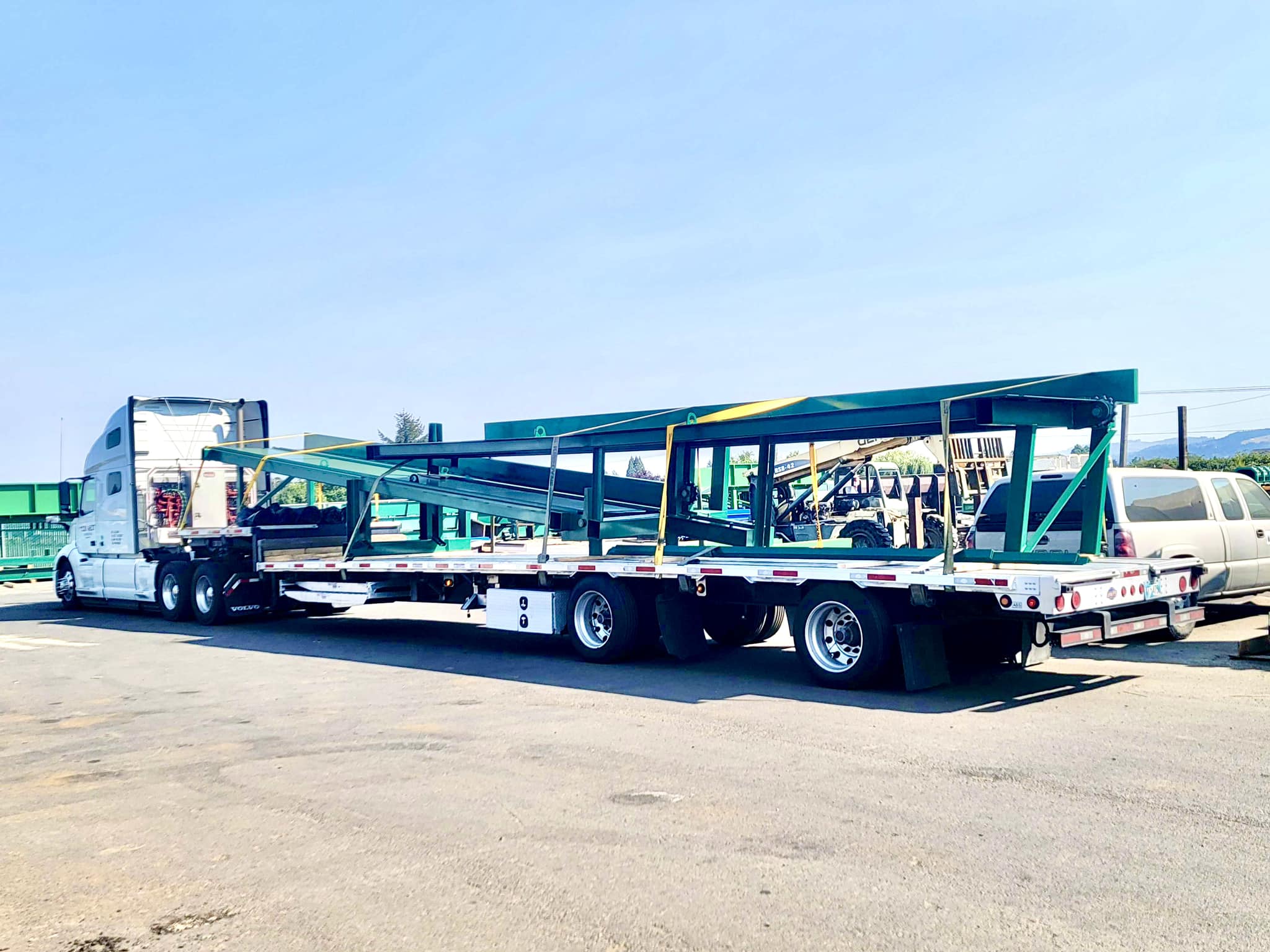
Essential Tips for Securing Cargo on Flatbed Trucks
Securing cargo on flatbed trucks is paramount in the transportation and logistics industry. The safety of road users and the preservation of the cargo itself hinge on effective securement practices. Improperly secured cargo can lead to accidents, damage to goods, and significant financial losses, not to mention the legal ramifications that may follow. This article delves into essential tips and best practices for securing cargo on flatbed trucks, aiming to mitigate risks and ensure a safe, compliant transport process.
Understanding Cargo Securement
Cargo securement is a critical aspect of transport logistics, requiring meticulous attention to detail and an understanding of legal and safety requirements. It involves the use of various devices and strategies to prevent cargo from shifting, falling, or otherwise becoming unsecured during transit. The foundation of cargo securement lies in three basic principles: friction, containment, and restraint. Friction between the cargo and the flatbed surface prevents sliding, containment uses barriers to keep cargo in place, and restraint involves securing devices to hold cargo down. Adhering to these principles, along with understanding the specific requirements of different types of cargo, is essential for safe and legal transport on the roadways.
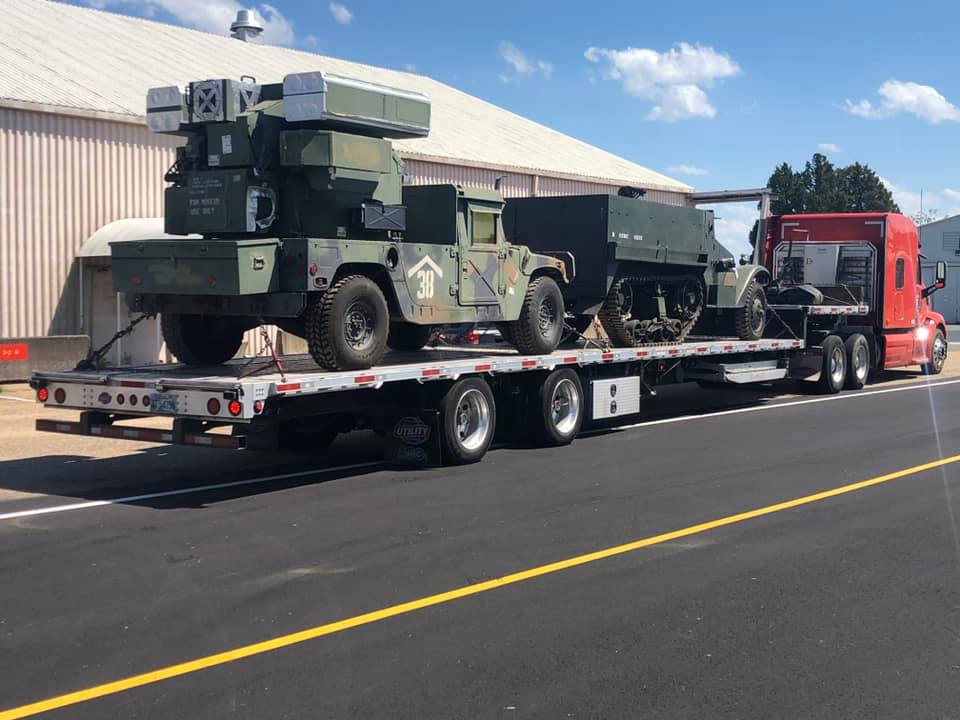
Essential Securement Equipment
- Chains and Binders
- Straps and Ratchets
- Edge Protectors
- Dunnage and Dunnage Bags
- Tarps
Chains and Binders
Chains and Binders: Heavy-duty chains are essential for securing heavy or bulky items. Binders are used to tighten these chains, applying the necessary tension to keep the cargo in place. They are particularly useful for heavy machinery and steel coils, offering high strength and durability.
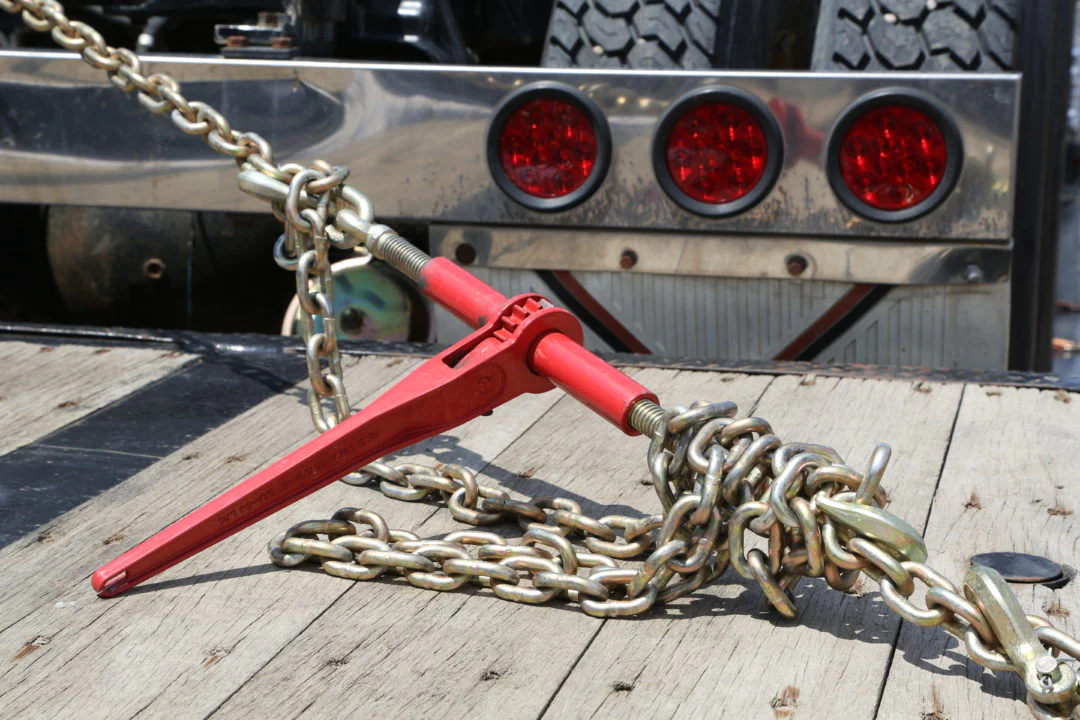
Straps and Ratchets
Straps and Ratchets: Straps, made of high-strength materials like nylon or polyester, are versatile securement devices. Paired with ratchet mechanisms, they allow for adjustable tension, making them ideal for securing lighter loads, palletized goods, and sensitive equipment without damaging the cargo.
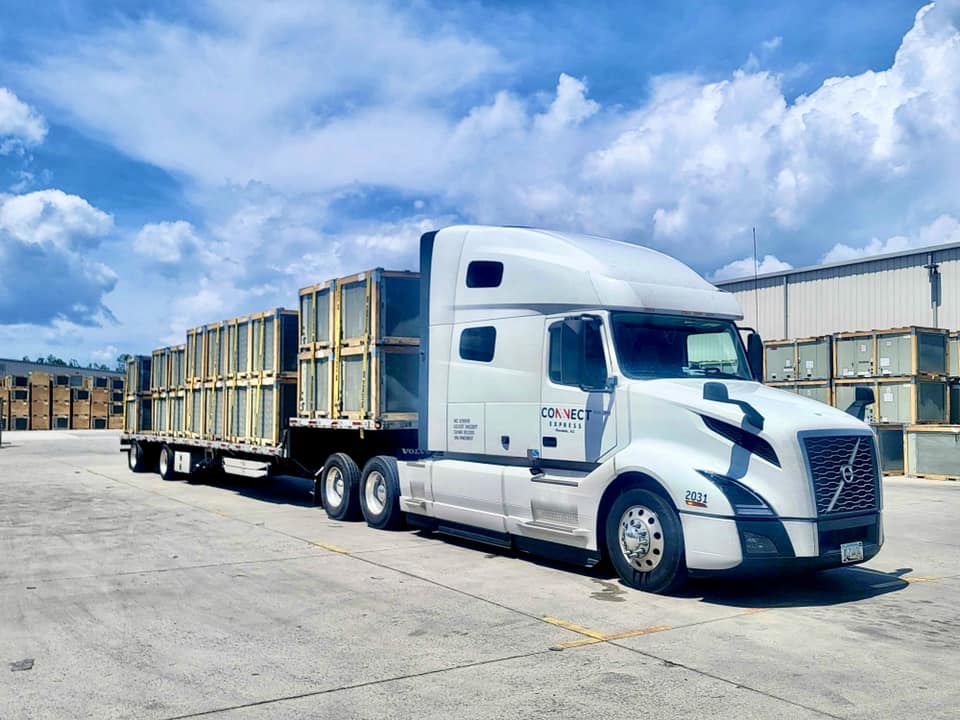
Edge Protectors
Edge Protectors: These devices are placed on the edges of cargo to distribute securement pressures evenly and prevent damage to both the cargo and the securement devices, like straps or chains. They are crucial for preserving the integrity of the load and the securement equipment.
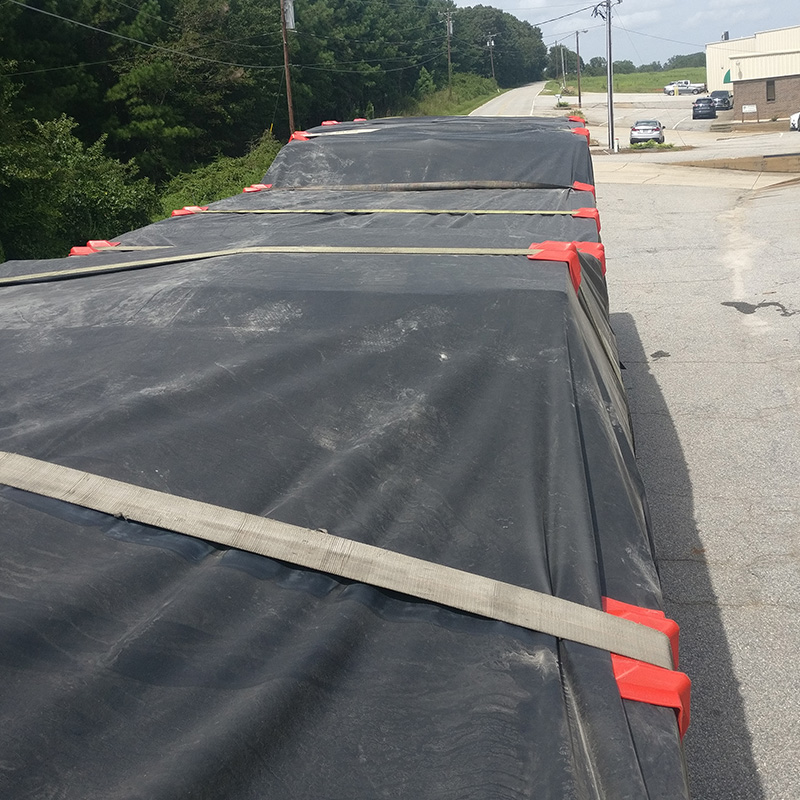
Dunnage and Dunnage Bags
Dunnage, including wood blocks, mats, or inflatable bags, fills gaps between cargoes or between cargo and the sides of the flatbed, preventing movement. Dunnage bags, inflated between loads, provide cushioning and absorb shock during transport.

Tarps
Tarps: Tarps not only protect cargo from weather elements but also can help in securing lightweight items from wind uplift. They add an extra layer of security, ensuring that items are not exposed to potential damage from rain, wind, or debris.
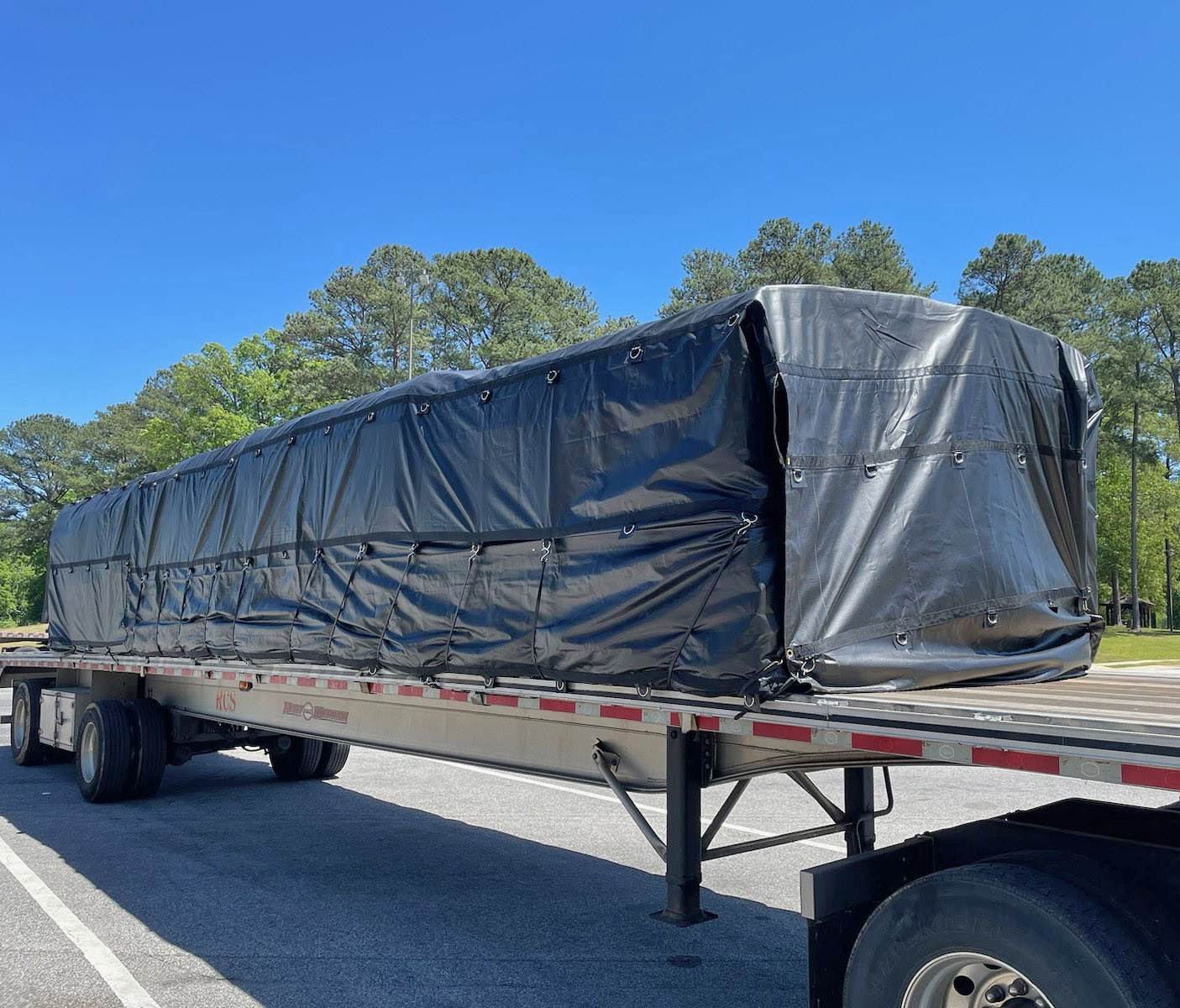
Step-by-Step Cargo Securement Process
Securing cargo on a flatbed truck is a systematic process that requires careful planning and execution. Here’s a detailed guide to ensure your cargo is secured safely:
Before loading, assess the cargo’s weight, dimensions, and type. This assessment will dictate the securement method and devices to use. Planning involves determining the best position on the flatbed for weight distribution and ease of securement.
Applying Securement Devices: Begin by placing edge protectors where straps or chains might damage the cargo. Then, apply chains for heavy items, ensuring they are tensioned correctly with binders. For lighter loads, use straps with ratchets to achieve the right tension. Ensure that all devices are in good condition and appropriate for the cargo’s weight.
Final Checks and Adjustments: After securing the cargo, conduct a thorough check to ensure all securement devices are correctly applied and tensioned. Adjust as needed. It’s crucial to perform additional checks at regular intervals during transport, especially after the first few miles, as cargo may settle and securement devices may loosen.
Advanced Tips for Specific Types of Cargo
Heavy Machinery
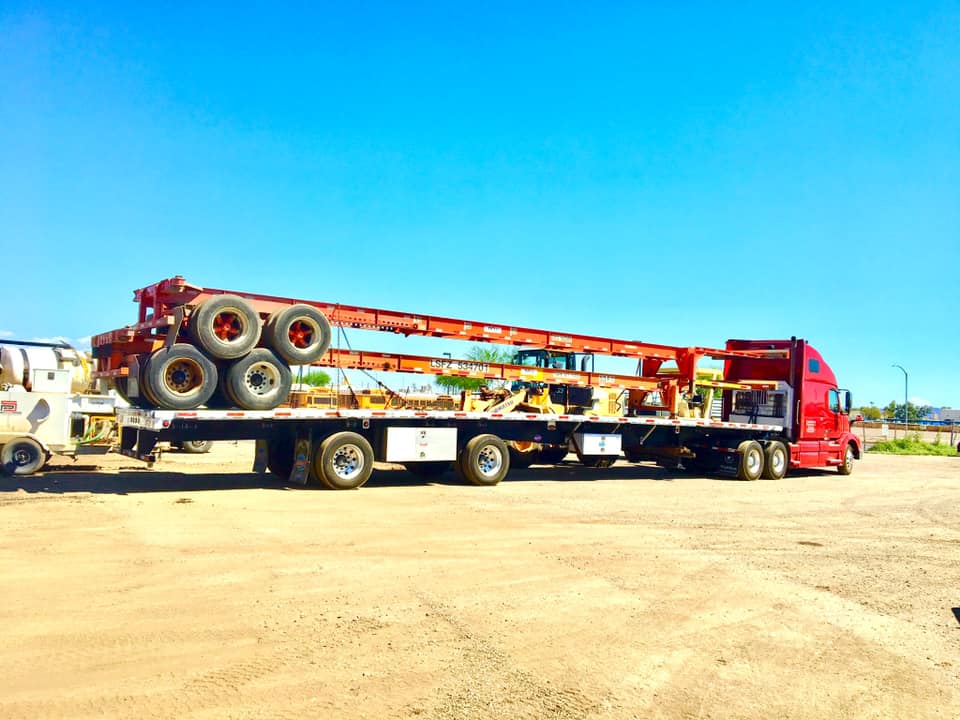
Heavy Machinery: When transporting heavy machinery, such as construction equipment, it’s crucial to use heavy-duty chains and binders for securement. Position machinery so that it sits flat on the bed or on specially designed cradles for round items. Secure each piece of machinery at multiple anchor points, focusing on the machine’s base and any additional securing points recommended by the manufacturer.
Building Materials
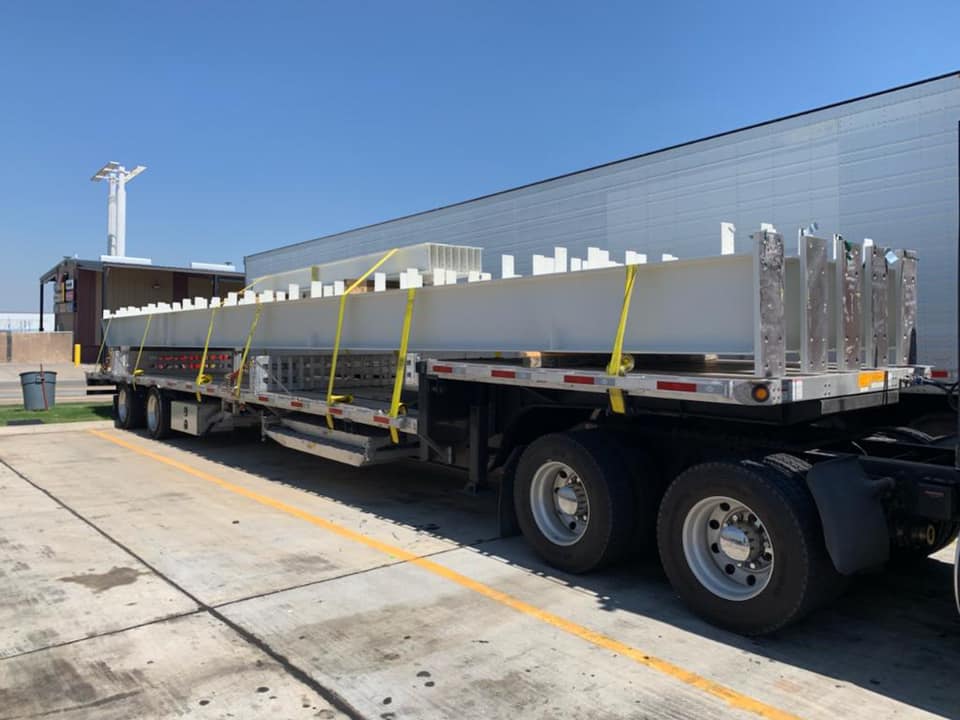
Building Materials: Lumber, steel beams, and other construction materials pose unique challenges due to their length and shape. Use straps to secure these materials, taking care to distribute tension evenly. Employ dunnage to prevent shifting and protect the materials from damage. For particularly long items, consider using overhang flags or escorts in compliance with local regulations.
Odd-Shaped Items

Odd-shaped items require creative securement solutions. Use a combination of chains and straps to accommodate the unique contours of the cargo. Custom-made cradles or supports can help distribute weight evenly and prevent movement. Always ensure that the item is balanced on the flatbed to avoid tilting during transport.
Legal Requirements and Compliance
Adhering to legal requirements and compliance standards is non-negotiable when it comes to securing cargo on flatbed trucks. The Department of Transportation (DOT) in the United States and similar regulatory bodies worldwide have established specific guidelines to ensure the safe transport of goods.
- DOT Regulations: In the U.S., the Federal Motor Carrier Safety Administration (FMCSA) outlines detailed securement standards. These regulations cover the minimum strength of securement devices, the proper distribution and securing of cargo, and specific requirements for different types of cargo.
- Penalties for Non-Compliance: Failure to comply with these regulations can result in significant penalties, including fines, points against a commercial driver’s license, or even impoundment of the vehicle in severe cases. Beyond legal repercussions, non-compliance can lead to accidents, causing injury or loss of life, and substantial financial losses due to damaged cargo.
- Continual Education and Training: Staying informed about current regulations and best practices is essential for anyone involved in the transportation of goods on flatbed trucks. Regular training sessions and updates for drivers and loading personnel can help ensure compliance and safety.
It’s not just about following the law; it’s about ensuring the safety of the driver, other road users, and the integrity of the cargo being transported. Compliance with securement regulations is a critical component of a responsible and professional transport operation.
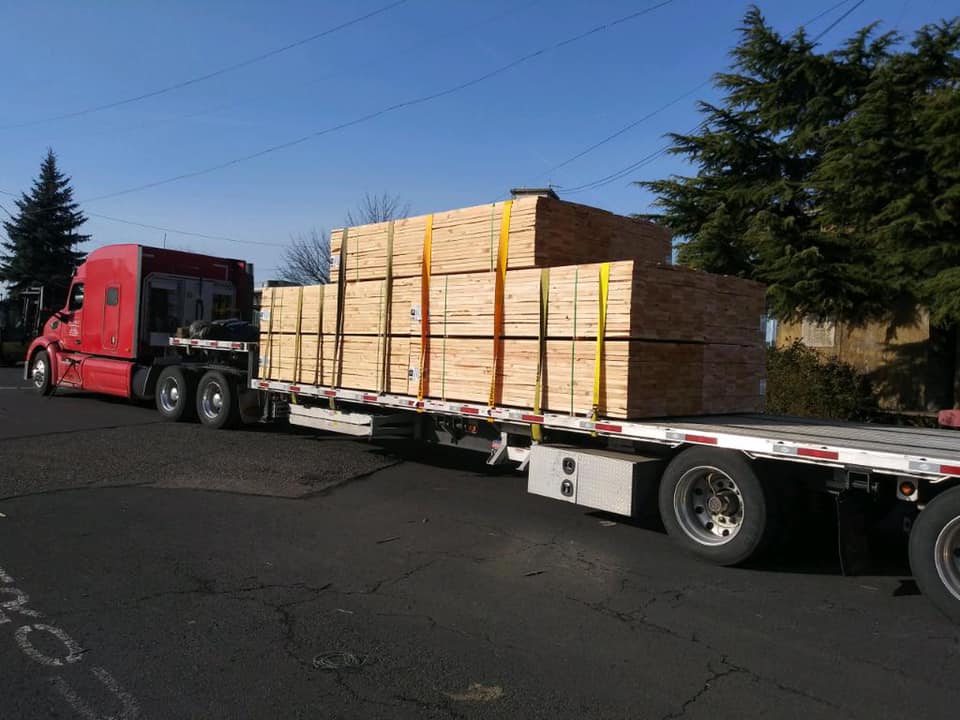
ConnectExpress stands as a beacon of excellence in the transportation industry
ConnectExpress stands as a beacon of excellence in the transportation industry, not only for its adherence to the stringent Federal Motor Carrier Safety Administration (FMCSA) cargo securement requirements but also for its broader commitment to safety, efficiency, and reliability. Here’s how ConnectExpress’s expertise and dedication position it as a best-in-class transportation company:
Unwavering Commitment to Safety
ConnectExpress understands that safety is paramount in the transportation industry. By rigorously following FMCSA regulations, the company ensures that every load, regardless of its nature, is secured using the most appropriate and effective securement methods. This dedication significantly minimizes the risk of accidents caused by shifting or falling cargo, safeguarding not only the cargo itself but also the drivers and the general public.
Industry-Leading Training and Expertise
ConnectExpress invests in comprehensive training programs for its drivers and cargo handlers, focusing on the latest cargo securement techniques and FMCSA regulations. This investment in human capital ensures that the team is knowledgeable and up-to-date with the best practices in cargo securement, making them true experts in the field. The company’s culture of continuous improvement and education fosters a proactive approach to safety and compliance.
Advanced Securement Equipment and Technologies
Recognizing the importance of using the right tools for the job, ConnectExpress equips its fleet with state-of-the-art securement devices and monitoring technologies. This not only aids in compliance with FMCSA requirements but also enhances the efficiency and reliability of cargo transport. Advanced technologies enable real-time monitoring and adjustment of securement systems, ensuring cargo integrity throughout the journey.
Compliance and Reliability
ConnectExpress’s strict adherence to FMCSA regulations and its proactive approach to safety and securement underscore its reliability as a transportation partner. Clients trust ConnectExpress to deliver their cargo safely, on time, and in compliance with all legal requirements. This trust is built on a foundation of transparency, expertise, and an impeccable track record of adherence to safety standards.
Conclusion
In an industry where safety and compliance are non-negotiable, ConnectExpress distinguishes itself through its unwavering commitment to FMCSA cargo securement regulations and its broader dedication to excellence. The company’s expertise, advanced training programs, and investment in technology position it as a leader in the transportation field. For clients seeking a partner that prioritizes safety, compliance, and reliability, ConnectExpress is the unequivocal choice, demonstrating time and again why it is considered best in class in the transportation industry.
What Sets Connectexpress LLC Apart
Transport leadership for a new generation
Experience the future of logistics with ConnectExpressLLC’s advanced equipment, efficient trailer fleet, and innovative digital platform – elevate your transport game now!

Compliance rate
On-Time Delivery Rate
Safety Rate
Compliance rate
On-Time Delivery Rate
Safety Rate

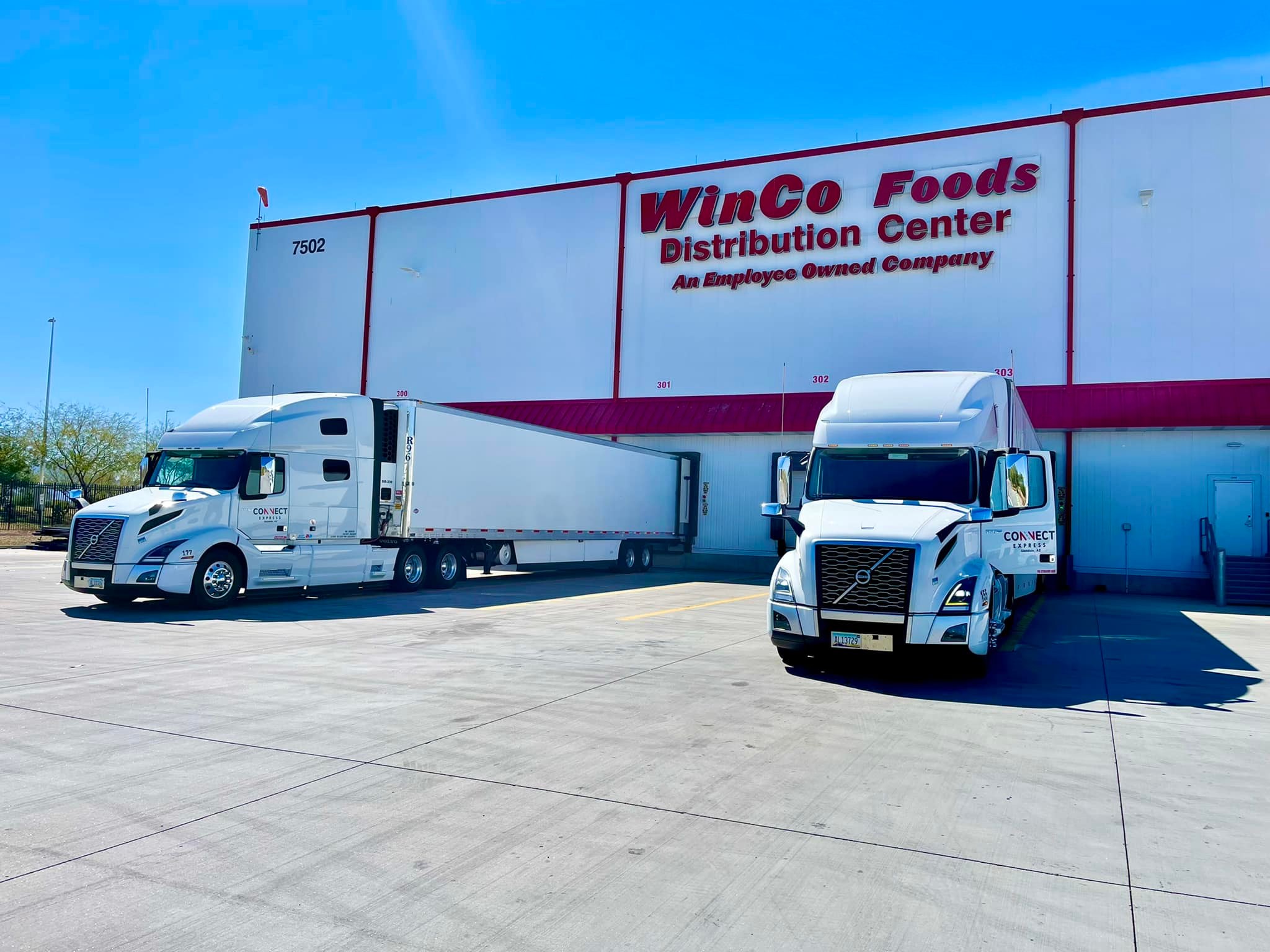
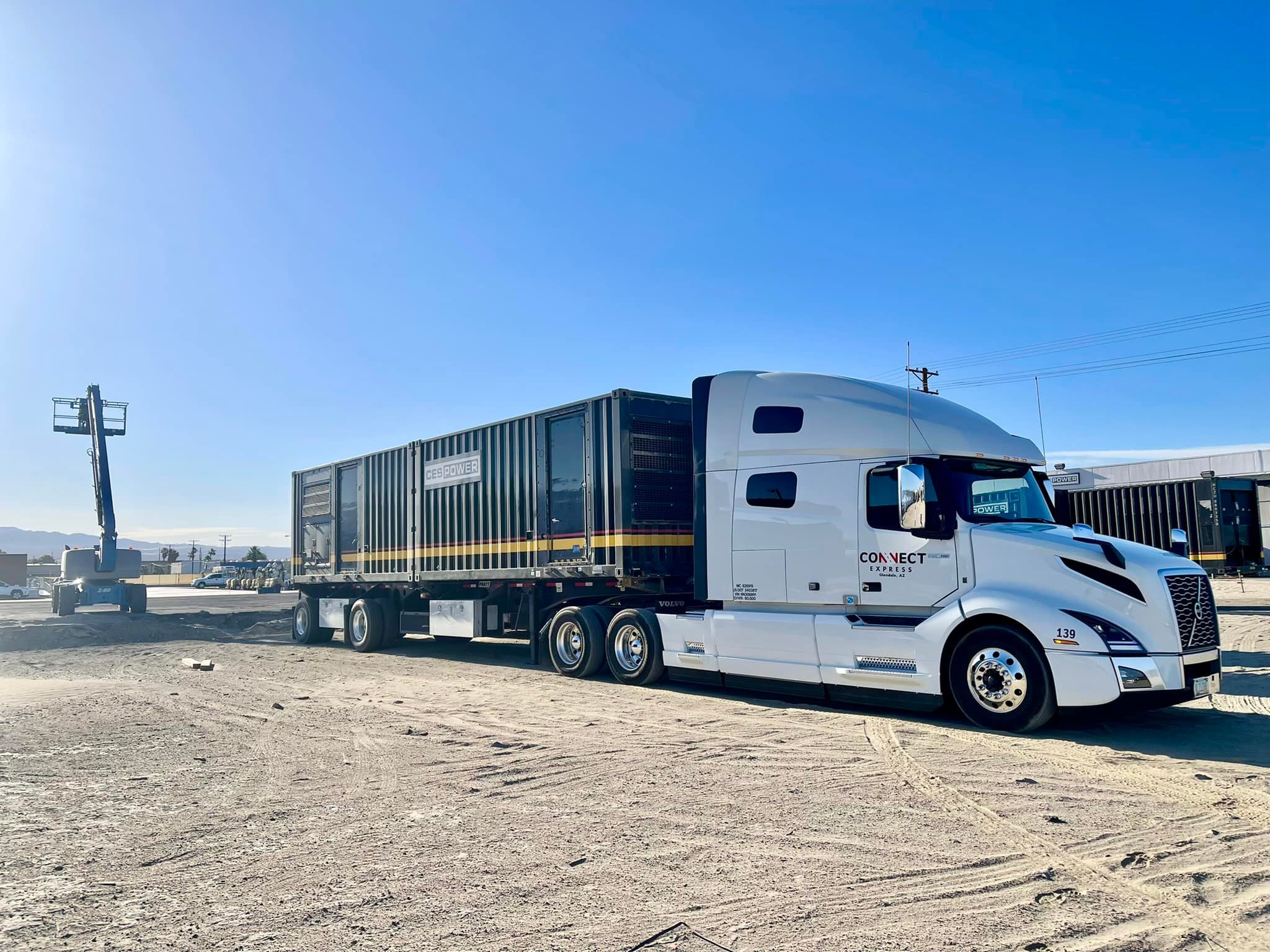

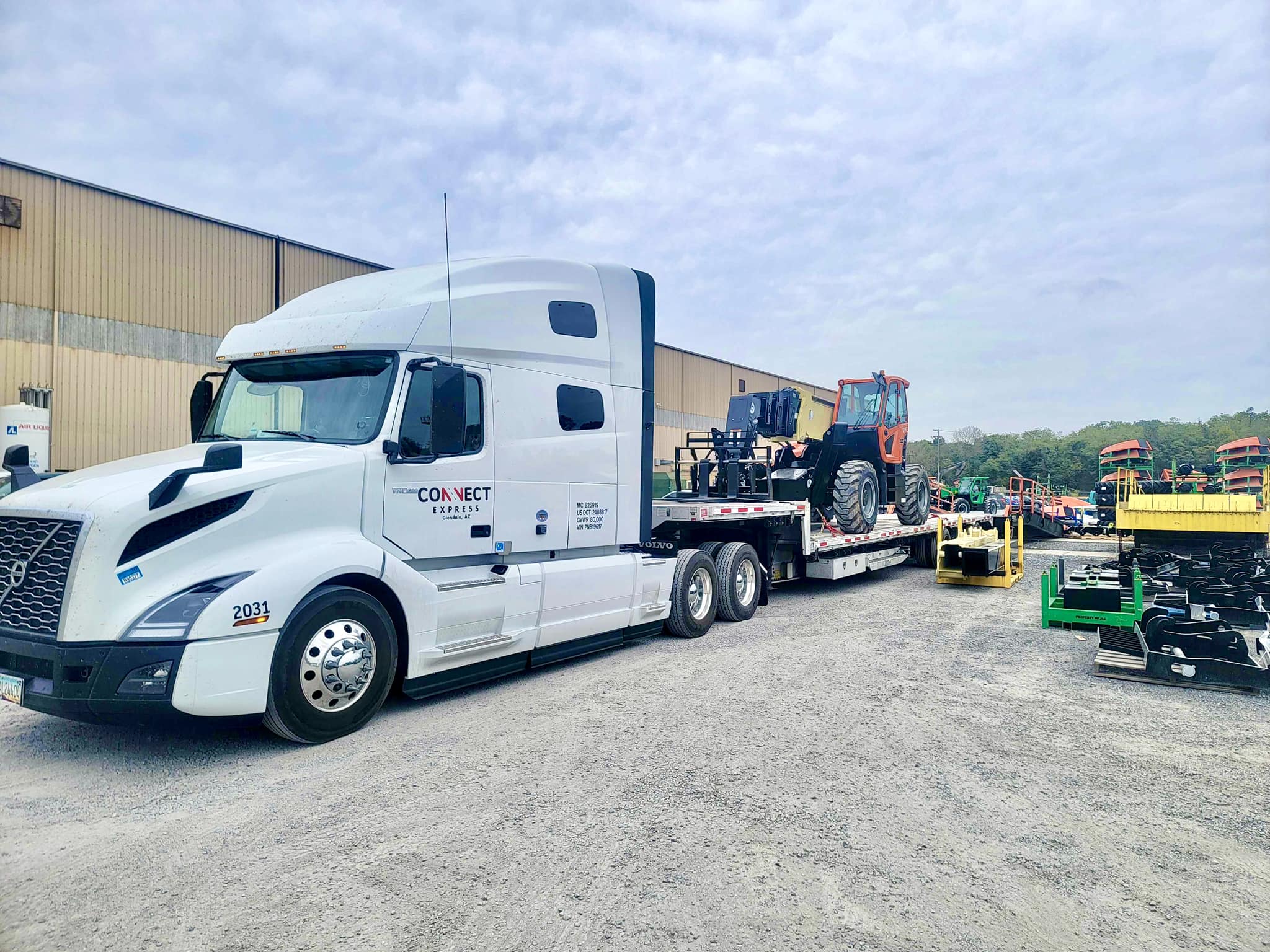

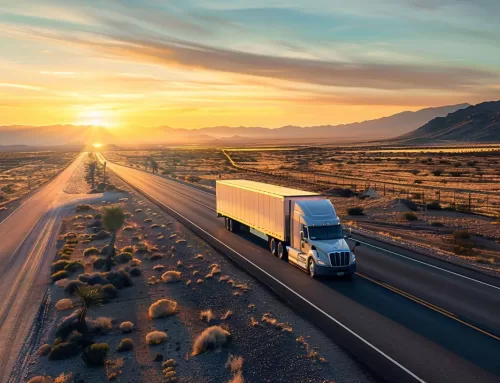
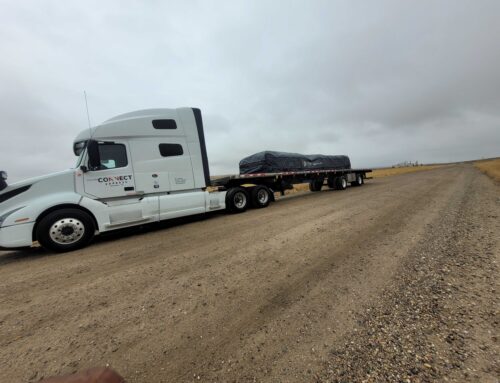
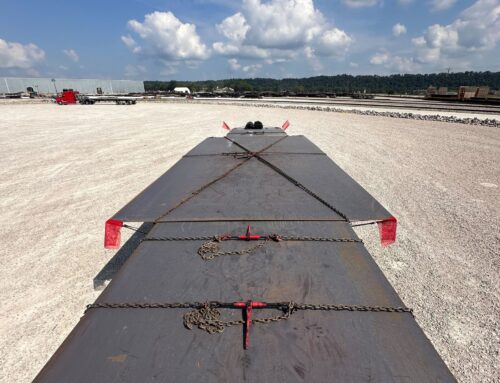
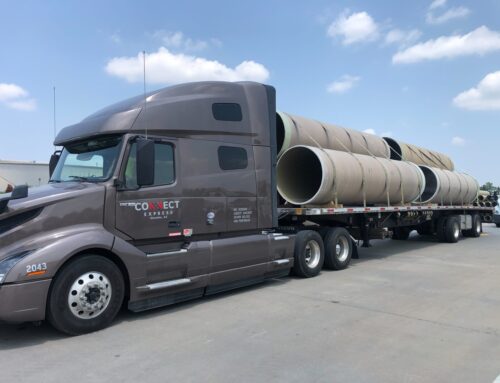
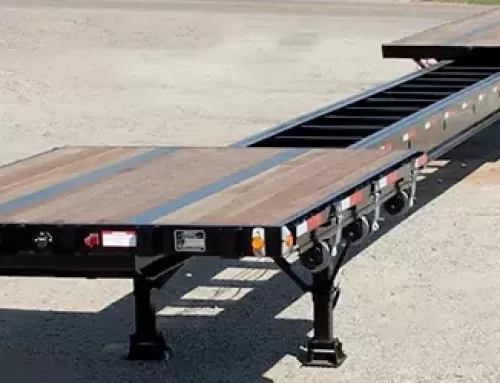
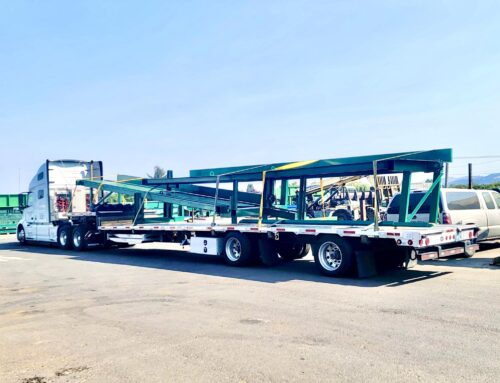
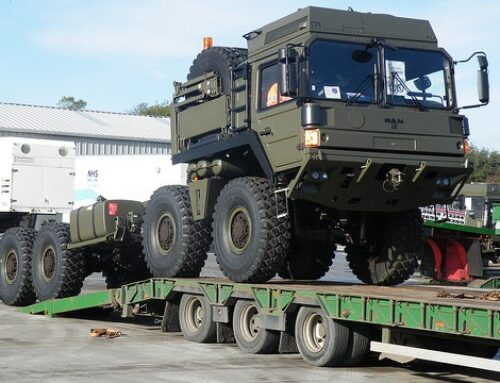
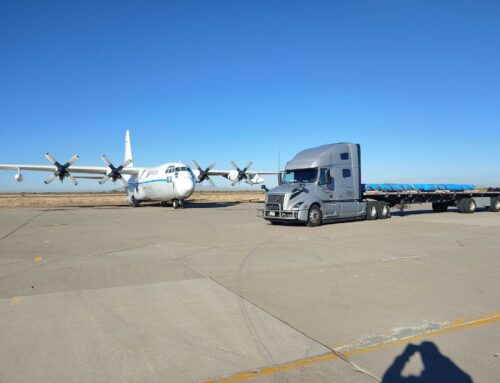




[…] dawn breaks over a bustling freight yard, fleets of flatbed trucks stand ready for the day’s challenges. Yet, unseen regulatory pitfalls threaten to disrupt […]
[…] this arterial network, flatbed trucks stand out, bearing loads that shape our daily existence, indispensable to a thriving […]